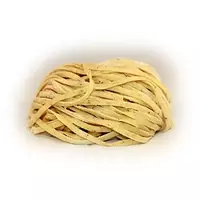Bawette pasta

We think that many residents of our latitudes, like the vast majority of the population of planet Earth as a whole, simply do not present their usual diet without such a popular and widely used food product as pasta. Pasta is nothing more than a pastry cookery, distinguished by its long-fibre-like shape.
Usually, wheat, buckwheat, and rice flour are used in the manufacture of various types of pasta. In addition, for specific varieties of pasta, as a rule, Asian products use starch obtained from mung beans. Pasta for a fairly long period of time remains an integral part of the diet of people. Pasta is especially popular in Italy.
Any Italian will tell you that without the famous pasta, like in other and without pizza, the traditional national feast will simply not take place. Because of such a love for pasta, at least 350 different varieties of pasta can be found in the modern Italian culinary tradition. Moreover, each type of Italian paste will be distinguished by high quality, as well as distinctive taste and consumer parameters.
For example, real Italian pasta does not stick together or lose its shape during the cooking process. The ancient culinary tradition of making pasta, as well as the use of the latest technologies and high-quality raw materials, helps Italian pasta manufacturers to achieve such a high quality of the final product.
Real Italian pasta is produced exclusively from hard varieties of high-quality wheat. Let's say more, dough for homemade Italian paste is kneaded exclusively on spring or key water. If you get to taste real Italian pasta at least once, you will immediately understand why Italians prefer homemade pasta to all culinary products.
Italian hostesses and nowadays always have a supply of ready-made homemade pasta. As noted above, Italy produces a colossal number of varieties of pasta. Among the most famous varieties are bawette pasta. Bavette pasta belongs to the group of long pasta, which is made from hard wheat varieties. Bavette pasta resembles in its appearance and shape spaghetti.
The birthplace of the bavette pasta is the historical territory of Liguria, which is located in northwestern Italy. If Naples is considered a spaghetti city, then Genoa is a bavette pasta. In Italy, bavette pasta is usually served under pesto sauce, which is made according to a special Genoese recipe.
In addition, it is the bavette pasta that works perfectly with seafood, fish or vegetables. Professional culinary experts and foodies claim that it is the distinctive form of bavette pasta that allows the product to "keep" the sauce on its surface, which allows you to reveal all the facets of the taste of the finished culinary products.
pasta bavette 351 kCal
Energy value of pasta bavette (Ratio of proteins, fats, carbohydrates - ju):
Proteins: 11 g (~ 44 kCal)
Fats: 1.3 g (~ 12 kCal)
Carbohydrates: 70.5 g (~ 282 kCal)
Energy ratio (b | y): 13% | 3% | 80%
 Español
Español Français
Français Português
Português Русский
Русский 简体中文
简体中文 繁體中文
繁體中文 日本語
日本語 한국어
한국어 العربية
العربية Türkçe
Türkçe Қазақ
Қазақ Deutsch
Deutsch Italiano
Italiano Українська
Українська
